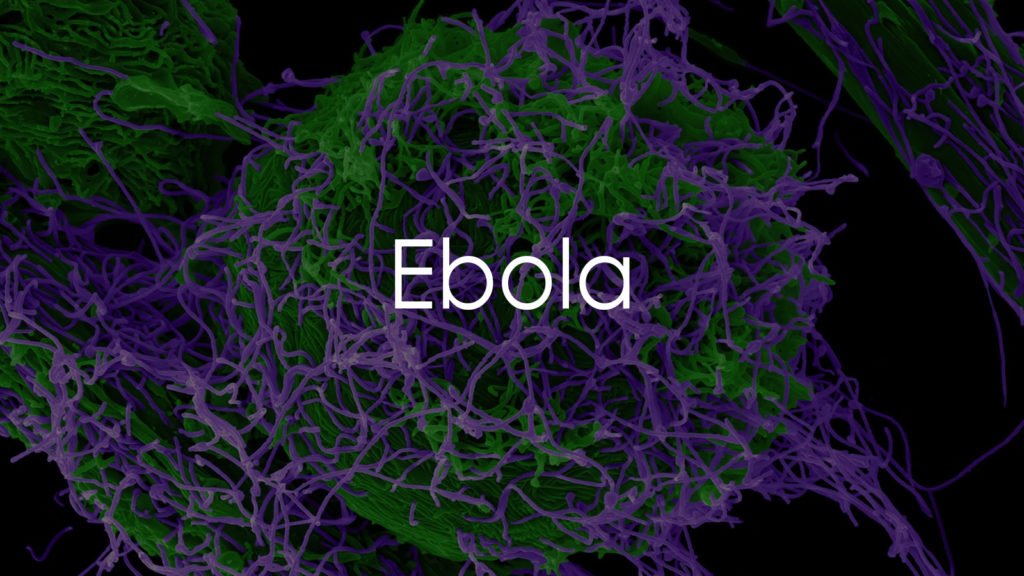Ebola virus disease (EVD), or Ebola, is a severe, often fatal human illness. It’s caused by the Ebola virus. First identified near the Ebola River in 1976, it’s had outbreaks in Africa. Symptoms include fever, weakness, muscle pain, headache, and sore throat. It progresses to vomiting, diarrhea, rash, and sometimes bleeding. Ebola’s high fatality rate and rapid spread pose a significant public health challenge. This article explores Ebola’s nature, causes, transmission, symptoms, diagnostics, treatments, and preventions. Understanding Ebola is crucial for effective outbreak responses and global health risk reduction.

Causes
Ebola disease, also known as Ebola virus disease (EVD), results from an infection with one of the Ebola virus strains.
- Viral Origin:
- Ebola is caused by a virus in the Filoviridae family, which includes several different species. The most commonly known species causing outbreaks is the Zaire ebolavirus.
- Transmission:
- Wild animals transmit the virus to people, and it then spreads among humans through human-to-human transmission.
- Transmission occurs through direct contact with blood, secretions, organs, or other bodily fluids of infected people, and with surfaces and materials contaminated with these fluids.
- One can also contract the virus through direct contact with the body of a deceased person who had Ebola.
- Risk Factors:
- Risk factors include working with wildlife, traveling to or living in regions where Ebola virus is prevalent, and caring for or coming into contact with someone who has contracted the disease.
Symptoms
The symptoms of Ebola can appear anywhere from 2 to 21 days after exposure to the virus, but the average is 8 to 10 days.
- Initial Symptoms:
- Fever.
- Aches and pains, such as severe headache and muscle pain.
- Fatigue.
- Sore throat.
- Progression of Symptoms:
- Symptoms can progress rapidly to more severe forms, including:
- Diarrhea.
- Vomiting.
- Rash.
- Impaired kidney and liver function, and in some cases, both internal and external bleeding (e.g., oozing from the gums, blood in the stools).
- Severe Cases:
- Ebola can be fatal, especially if not treated promptly. The disease can lead to significant loss of blood and fluid, resulting in low blood pressure and shock.
Ebola disease requires immediate medical attention upon the onset of symptoms. Due to its high fatality rate and rapid spread in communities, it is considered one of the most virulent viral diseases.
Diagnosis
Early and accurate diagnosis of Ebola is crucial due to its high fatality rate and rapid spread.
- Initial Assessment:
- Diagnosis begins with an assessment of symptoms and a review of potential exposure to the virus, such as travel history to affected areas or contact with infected individuals.
- Laboratory Tests:
- Ebola virus infections can be diagnosed definitively in a laboratory through various types of tests. These include antigen-capture enzyme-linked immunosorbent assay (ELISA), reverse transcriptase polymerase chain reaction (RT-PCR), and virus isolation.
- Blood samples are collected from the patient and tested for the presence of the Ebola virus.
- Supporting Tests:
- Additional tests to monitor the patient’s status include blood clotting tests, liver function tests, and electrolyte assessments.
Treatment
There is no specific cure for Ebola, but early supportive care with rehydration and symptomatic treatment improves survival.
- Supportive Care:
- Includes rehydration with oral or intravenous fluids and treatment of specific symptoms.
- Management of fever, pain, nausea, and diarrhea is important.
- Experimental Treatments:
- Healthcare professionals use various experimental antiviral drugs, immune therapies, and blood products from Ebola survivors under emergency conditions.
- Isolation and Infection Control:
- Healthcare teams isolate patients from the public and implement strict infection control measures. These include using personal protective equipment (PPE).
Prevention
Preventing Ebola virus infection involves measures to reduce the risk of wildlife-to-human and human-to-human transmission.
- Avoiding Contact with Wildlife:
- In regions where Ebola is common, avoiding contact with wild animals and consumption of bushmeat can help prevent the initial transmission of the virus.
- Protective Measures in Healthcare Settings:
- Healthcare workers should use full protective clothing, including masks, gloves, and gowns, when taking care of ill patients.
- Public Health Measures:
- Rapid identification and isolation of cases, tracing and monitoring of contacts, and safe burial practices are critical in controlling outbreaks.
- Education and Awareness:
- Public education on the symptoms of Ebola and necessary precautions can help in early detection and containment of outbreaks.
- Vaccination:
- The rVSV-ZEBOV vaccine has shown to be effective against the Zaire ebolavirus strain and is used in ring vaccination strategies during outbreaks.
Overall, a combination of early diagnosis, appropriate and prompt treatment, strict infection control, and effective public health measures, including vaccination, are key to managing and preventing Ebola virus disease.
Conclusion
Ebola remains one of the deadliest viral diseases. Outbreaks cause high mortality and public health crises. Combatting Ebola requires swift diagnosis, immediate isolation, and supportive care. Infection control protocols are essential. There’s no definitive cure, but effective vaccines are a major prevention milestone. Public health measures include community engagement and awareness programs. Quick outbreak responses are crucial. Past outbreaks inform global preparedness and response strategies. Ongoing vigilance, research, and international cooperation are necessary to manage and prevent future Ebola outbreaks.